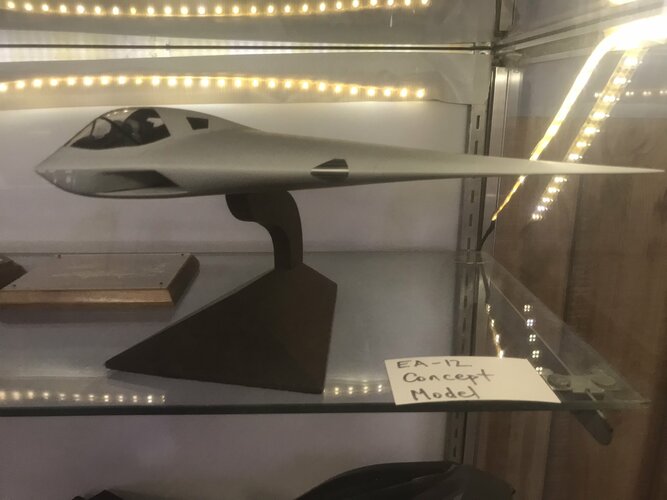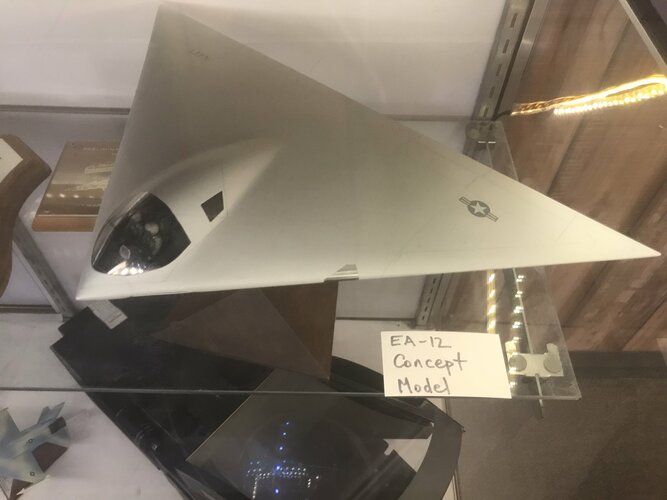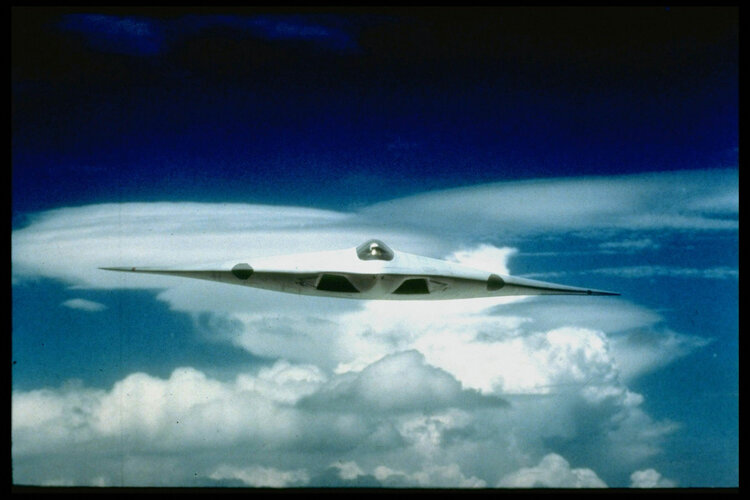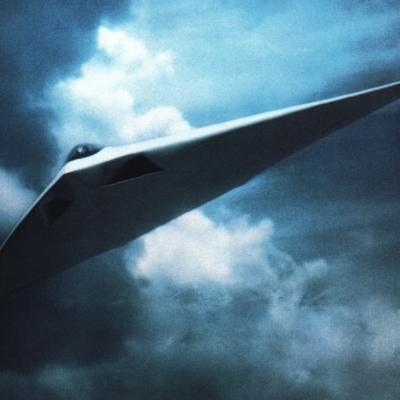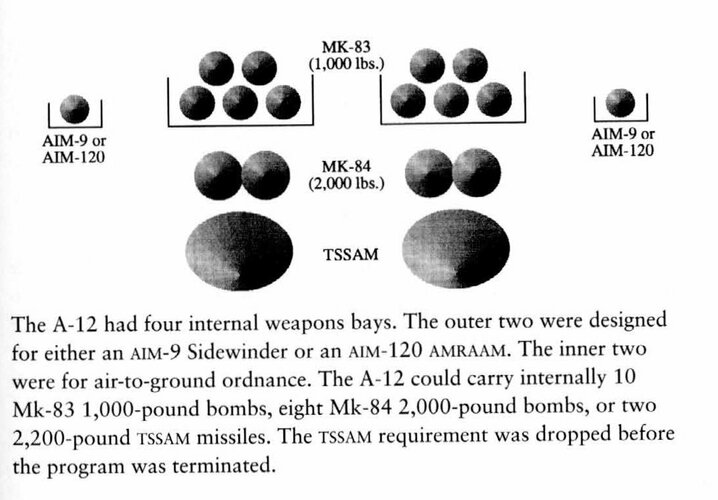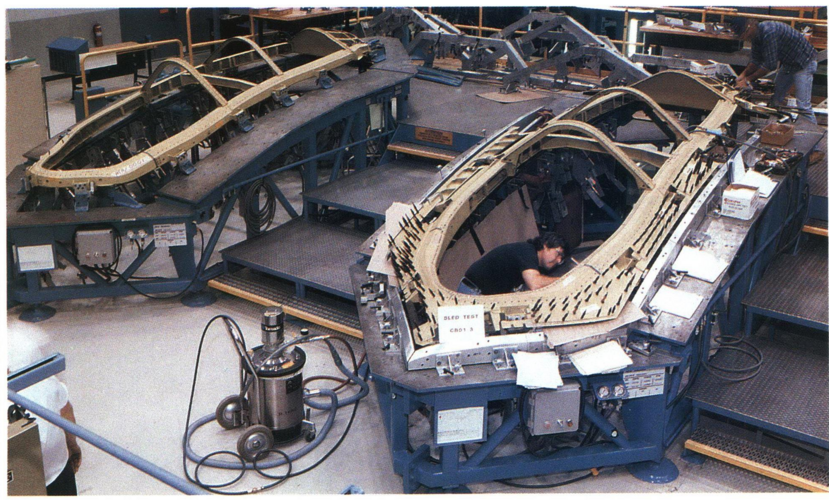If it was real, it looked, in it's final configuration, nothing like a Flying Wing and much more like a Modified Delta, similar to the X-47B.
The A-12, as it was finally configured had a nose job that was described as a 'bra' which greatly modified the forward quarter RCS values of the inlets which were a known cavity reflector weakness in the design.
Are there any drawings of this "final" design?
Though often labeled as 'Northrop' in origin, it clear is not. As the A-11 was essentially a minime B-2 with a W wing.
The first time I saw it was actually as a cufflink type pin. I was told it represented a covert signal among members of a minor rebellion in the Navair community that was trying to Phoenix the A-12 up from the ashes as the A/X in the immediate aftermath of cancellation.
You get fed a whole lot of targeted disinformation in the defense world as a kind of misleading propaganda, designed to feed both conspiracy theorists (DOD is so incredibly inept/corrupt etc.) and enemy techint monitors among other things.
It had 'never in our wildest imaginings' (fake, false, never intended to reach flight hardware, as a naval bomber...) been believed that the A-12 would be cancelled. Sternly lectured, individuals censured or even jailed, but not dumped like yesterday's garbage. This was the story I was told. So of course, as a contrarian, I automatically assumed they were lying and simply got out the big book of fact checking as a protractor to determine how many degrees out of true.
Though, in some ways, it does make sense because of course, in the Reagan era, they sponsored such things as the DIVAD and AMRAAM and Maverick D through a literal DECADE of false promises field testing and back to the lab failure on systems whose absence would have literally changed the course of any hotwar in Europe at a time when Russia (lost in the weeds of Afghanistan) 'really was' Enemy #1.
And prepping to fight in Europe should have been the laser focus for everyone while the Window Of Vulnerability persisted. Which principally means slinging powered smart weapons from outside the target terminal area defenses, in all weathers, not chasing high tech as a post-1990 fantasy, at best (remember Lehman's doubts).
With this in mind, just as with ATA, A/X had a 'fast' and 'slow' approach.
With the latter supposedly intended to capture as much of the development work which went into the original A-12 as possible while removing excessive spec chasing requirements like the outer self defense bays and the absolute payload threshold of X16 Mk.82 which required two main weapons bays, each roughly 90% of the size of that on the F-22.
Couple this to a GEF414 level unreheated engine core able to push a realistically 58-62,000lb (F-14 level) airframe and you have the beginnings of a much tighter overall design. Even as the extended nose likely improved induced drag by resetting the level flight AOA and gave a slightly less close coupled control factor between LE and TE surfaces (never did understand the idea of slats on a VLO...) during power-on approach.
If you look at the A-12 clear model, it becomes obvious that the serpentine just isn't that well developed on the original F404 installation and again, extending the trunking would allow for a bit more fold around the cockpit tub assembly and possibly less flash-back from reprofiling the angled inlet corners.
The ability to rapidly make these kinds of major LO design modifications, on the fly is was why Lockheed ended up on so many A/X transitional teams and then leading A/FX, as they had the pedigree of making ATF work within a tripartite teaming arrangement that got the job done.
Unfortunately, the USN, failing to realize that the post-ODS 90s was to be a time of Congressional tear down of all that had been built by Reagan, via the BUR and BRAC, force restructuring, just got sideswiped.
To the point that their fallback was the F/A-18E/F.
Their being in the doghouse of tacair failure was just a convenient way to bring the clippers a lot closer to the skin because they still had BGM-109. How the squids actually thought they could simply restart the ATA program under a new name/same shape and get back on track in this environment is anybody's guess.
In the commercial sector, this would be deemed a toxic condition of 'extreme market sensitivity' to a failed product line and avoided at all costs.
Certainly The Flying Wing was a no-go as an attack bomber, though it likely did fly in other colors-
A new photo of the mysterious unidentified flying object in Texas, flying over Wichita, Kansas by Jeff Templin, clearly saws a triangular-shaped wing plane

wordlesstech.com
As Congress /supposedly/ finally put their foot down on blind alley SAR-U programs and thus the eventual A/FX became a reversion to the 'Fast' ATA mode as VG, as a subsonic change to the NATF profile.
You could say that the USN finally realized what a pickle they were in, having cancelled A-6F and G and even the F-14D reman to buy-in on the A-12, now finally understanding the bigger picture of going into the 90s with a 1960s era (and badly aging) heavy fighter/attack fleet while potentially being asked to fight, in SWA, across radii twice the size of Europe or Korea.
Well beyond safe support mission rollback of threats.
And, like the blind man finally seeing as he opens his eyes to a drowning in sharks condition, they flailed out to grab the best of both worlds solution within in easiest reach. Which was a stubby, subsonic, PW7000 engined, ATF with VG.
It still wasn't enough. As everything was Jointness (have a toke) driven and we began plodding down the road to Fat Amy. Irony of ironies: where the A-12 was clearly the result of designing to an absolute signature threshold parameter without thought towards boarding; the JSF would put 90% of engineering effort into a non-common set of basing mode as 1% of the sortie evolution. While ignoring the entirety of the up and away KPP combat requirements as far as kinematics, weapons load and all aspect VLO.
Reach for pie the sky, end up sucking sewage in the gutter.
And so we now have an I-Pod fighter designed to exploit information as an ISR hubnode under conditions where a smart stealth asset conservatism would be didimau'ing out of Dodge rather than loitering to vacuum the battlespace as a veritable lighthouse of MADL emissions where everyone will be pointing hunting fast set-on receivers at it and attempting to inject viruses into it's network.
I miss the 80s. Better a fantasy of how stealth could be usefully employed to help build a better bomb truck than the madness of uncompartmented data trading 'to help penetrate the JASSM', as today.

